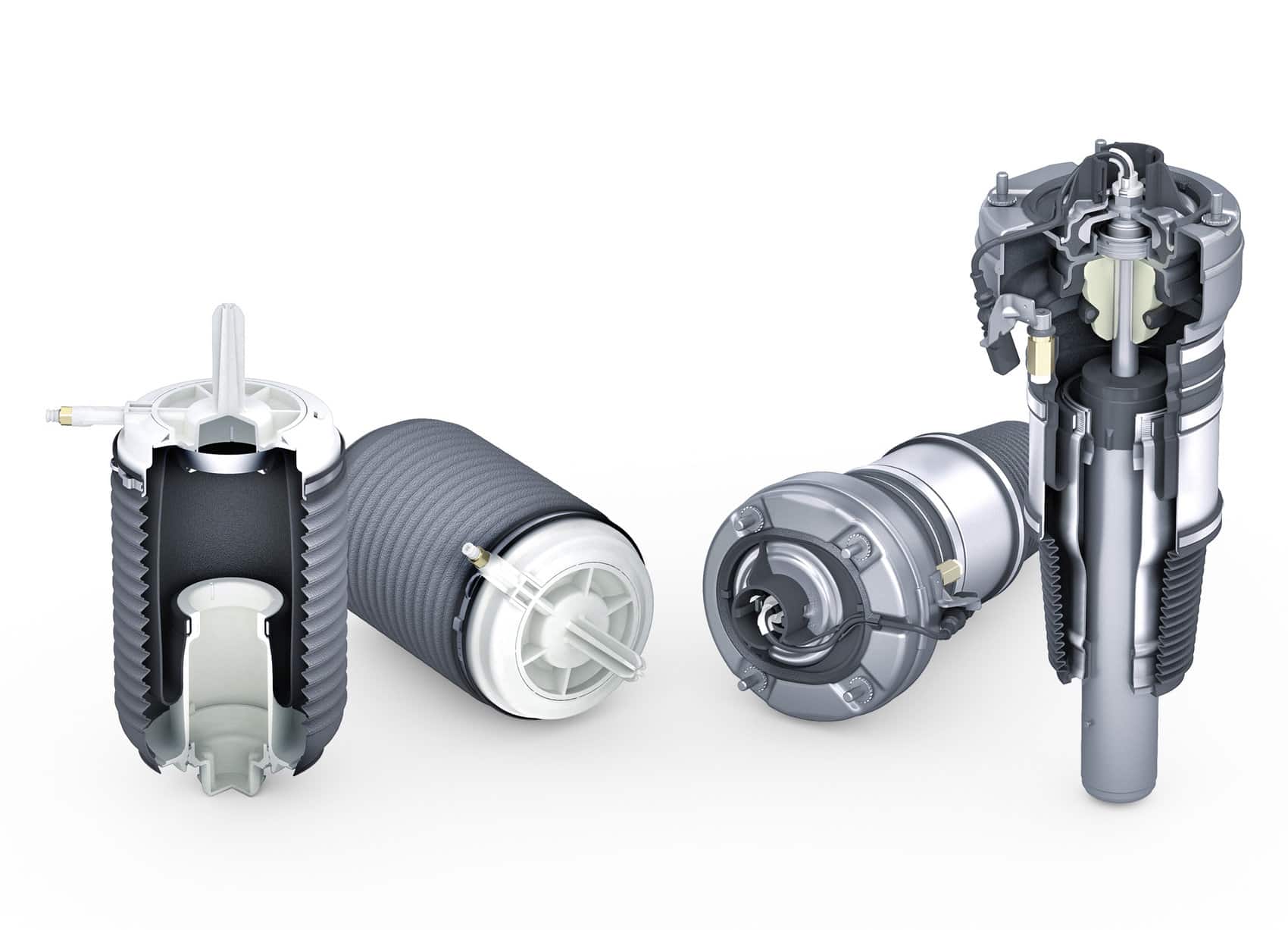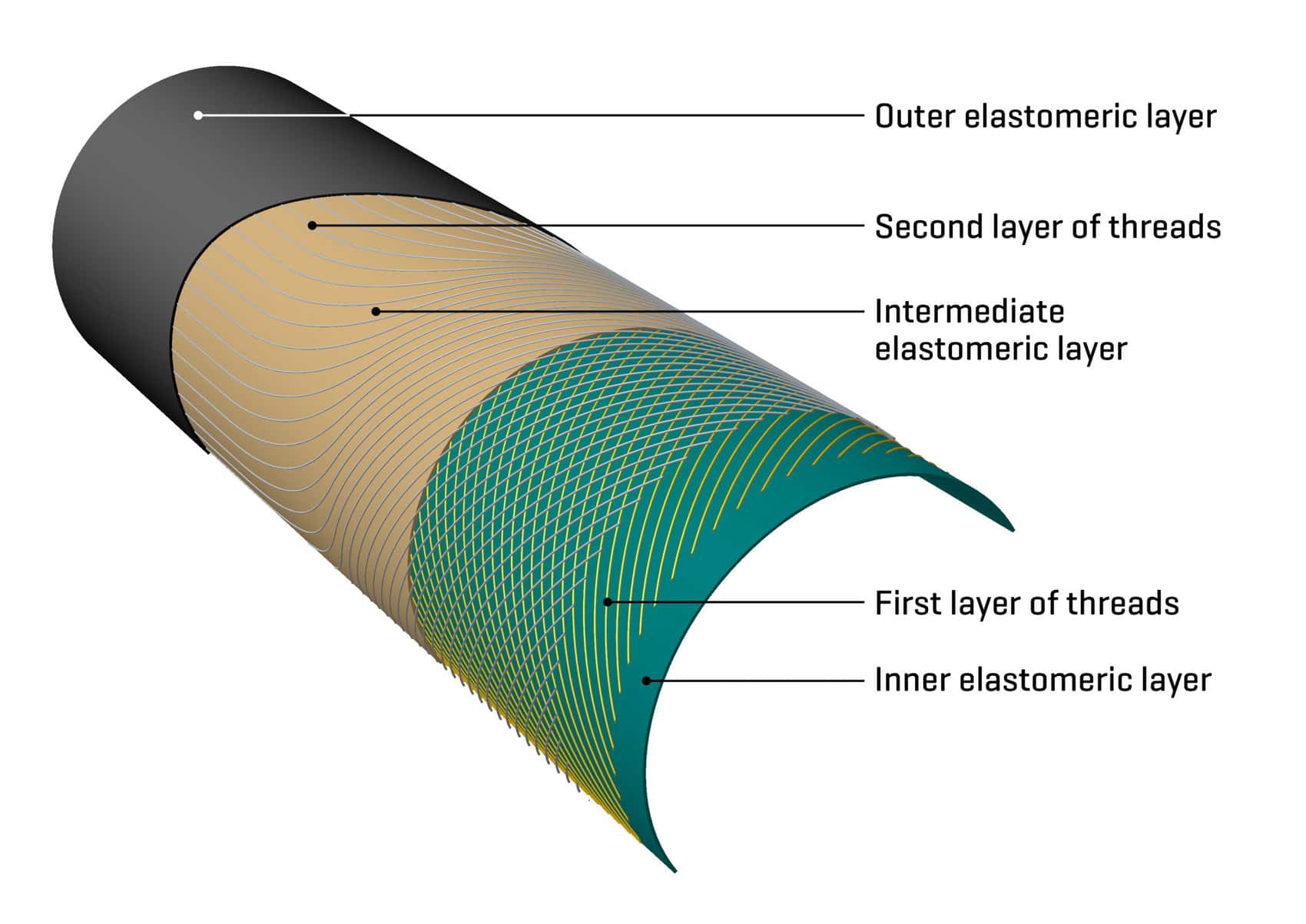Darmstadt, 13. February 2015 |
TrelleborgVibracoustic develops new bellows technology for air springs
TrelleborgVibracoustic, the world’s leading supplier for vibration control technology, has developed a new bellows technology for air springs. The “ZAX bellows” combines the advantages of the cross-ply and axial bellows previously used in passenger cars. The new technology will be applied for several SUVs.
For a long time being able to adjust the handling characteristics of your car individually was no more than a dream – air springs have helped to make it come true. Their advantages over steel springs are compelling. For one thing, air suspension keeps the vehicle at a constant level – no matter how heavily loaded it is. For another, the driver can adjust the suspension system at will and, for example, choose between stiffer sports suspension and a more comfortable setting.
The air spring is installed either as a unit with the shock absorber or separately (stand-alone). A compressor provides the supply pressure. The key element in the air spring is the rubber bellows – it essentially determines the comfort and service life properties. Thus far, TrelleborgVibracoustic has produced two different types of bellows. They differ in terms of the structure of the reinforcing fibers embedded in the bellows. With an axial bellows, the fibers embedded in the elastomer run axially to the deflection direction. In contrast to this, the cross-ply bellows has two intersecting layers of reinforcing members, but they are not connected as opposed to a fabric. The newly developed cross-axial bellows, or ZAX bellows, combines the good torsion decoupling capability of the axial bellows with the dimensional stability of the cross-ply bellows.
The new bellows technology will go into series production in 2015 on the rear axle of a number of new SUVs. Since the air springs are in this stand-alone application not guided by the integrated vibration dampers in this stand-alone application, they need to absorb high gimbal and torsional forces. The cross-ply bellows previously used on the rear axle usually require an elastomeric element or a plain bearing for torsion decoupling. This reduces harmful tension and improves the initial suspension response. Eliminating the torsion decoupling element reduces the production costs for the ZAX bellows. The reduced space requirement is very important, especially on the rear axle; it means that the load compartment can be extended, or additional features, such as greater volumes, or valves for switchable air springs, can be realized.
The cross-ply bellows mainly used on the rear axle uses two layers of intersecting reinforcement carriers (fibers) in the bellows wall. These are covered inside and out with a sealing or protective elastomer layer. There is another elastomer layer, the intermediate layer, between the two layers of threads. The intermediate layer defines the geometrical cohesion of the two layers of threads. With a cross-ply bellows, the pressure resilience is defined by the stability carrier, while the material properties of the intermediate layer influence the service life and comfort. The advantages of the cross-ply bellows are its high pressure resistance and dimensional stability, along with a relatively simple and reliable production process.
In the axial bellows, the reinforcement fibers embedded in the elastomeric matrix are arranged parallel to the bellows axis. If this bellows were filled with air, it would swell and burst like a balloon. This explains why this bellows design needs a support tube to limit free deformation. This external guide is designed as a thin-walled aluminum tube. The great advantage of this design is that the air spring bellows consists of two very thin layers of elastomer, in which you only need to embed one fiber layer. This allows a particularly thin-walled design for this type of bellows. Thanks to its improved initial suspension response to minor excitations, the ride comfort is excellent.
Unique production technology
TrelleborgVibracoustic is the world’s only air spring manufacturer capable of producing axial bellows and ZAX bellows, which have an axial component. The bellows hoses, which are up to 100 cm in length, are trimmed to the desired length as required; the elastomeric and fiber material are then applied at separate stations. After spraying on the first layer, a metal mandrel is driven into a fiber runner in a system-controlled process; the runner then pushes the fiber onto the elastomer layer in a geometrically-defined manner. Precise spacing of the threads is particularly important for axial and ZAX bellows. It defines the service life under the influence of kinematics, pressure and temperature. For a cross-ply bellows, another elastomer layer and another fiber layer are applied before a protective outer elastomeric layer (covering layer) completes the process. For an axial bellows, the cover layer is applied directly to the first and only fiber layer. Increasing numbers of manufacturers are relying on this manufacturing expertise and the resulting product quality. Today, every second passenger car that runs on air springs is equipped by TrelleborgVibracoustic.


